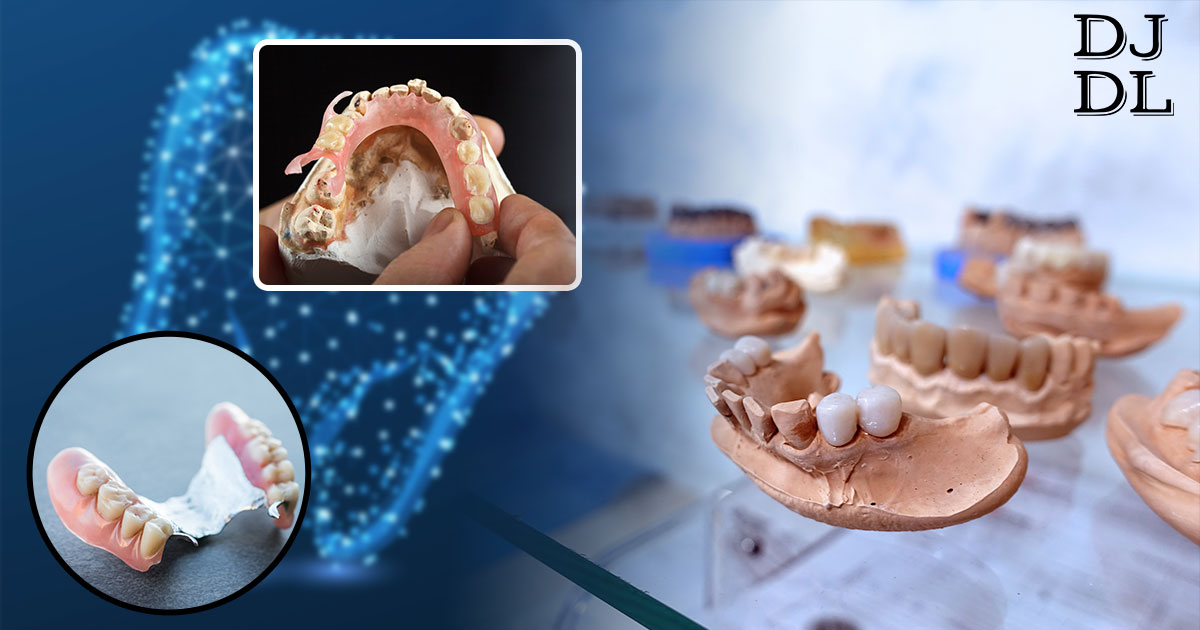
Precision cast partial design: the role of digital dentistry
Digital dentistry has revolutionized the field of prosthodontics, particularly in the design and fabrication of precision cast partial dentures. The modern approach leverages advanced technologies to enhance the precision, efficiency, and overall quality of cast partial dentures. Digital dentistry has transformed the landscape of precision cast partial denture design by offering a more accurate, efficient, and patient-friendly approach. The integration of digital technologies enhances the entire workflow, from impression-taking to the fabrication of the final prosthesis, ultimately leading to improved outcomes in terms of fit, function, and aesthetics. Here is the role of digital dentistry in designing precision cast partials :
- Digital Impressions: Digital dentistry replaces traditional, messy impressions with digital impressions obtained through intraoral scanners. This not only eliminates patient discomfort but also provides highly accurate and detailed 3D models of the oral structures, serving as the foundation for designing precision cast partials.
- CAD/CAM Technology: Computer-Aided Design (CAD) and Computer-Aided Manufacturing (CAM) technologies play a crucial role in the digital dentistry workflow. CAD allows for the virtual design of the partial denture, ensuring precise customization based on the digital impressions. CAM then translates these designs into physical restorations with high accuracy.
- Virtual Design and Planning: Dentists and dental technicians can use specialized software to digitally plan and design the partial denture. This includes the arrangement of teeth, consideration of occlusion, and optimization of the prosthesis for both aesthetics and function. The digital platform enables meticulous customization to meet the specific needs of each patient.
- Accuracy and Consistency: Digital workflows significantly improve the accuracy and consistency of partial denture designs. The elimination of manual errors associated with traditional methods enhances the overall fit, comfort, and functionality of the prosthetic, leading to improved patient satisfaction.
- Rapid Prototyping: Digital dentistry allows for the rapid prototyping of partial dentures. Once the design is finalized, CAM technologies facilitate the quick production of physical prototypes or even the final restoration. This expedites the overall treatment process and reduces the time patients spend without their prosthetic devices.
- Material Selection: Digital dentistry provides a wide array of material options for precision cast partials. The digital design can be adapted to different materials, each with specific properties such as strength, biocompatibility, and esthetics. This flexibility allows for tailoring the partial denture to the patient’s individual needs.
- Remote Collaboration: Digital workflows enable seamless collaboration between dental professionals, even if they are geographically distant. Dentists can share digital impressions, designs, and other relevant data with dental laboratories, fostering effective communication and ensuring that the final partial denture meets the desired specifications.
- Patient Involvement: Digital dentistry facilitates greater patient involvement in the treatment process. Patients can visualize and understand the proposed design through virtual models, enabling them to provide feedback and make informed decisions about their prosthodontic treatment.
Comfort and fit of cast partials: Common concerns.
The comfortable cast partials are critical factors in ensuring patient satisfaction and successful prosthodontic treatment. Several common concerns are associated with these aspects, reflecting challenges that may arise during the design, fabrication, and adjustment phases. Here are some denture challenges to address while ensuring the comfort and fit of cast partials:
- Pressure Points and Sore Spots: Patients often report discomfort caused by pressure points or sore spots on the oral mucosa. This can result from inadequate distribution of forces or localized pressure due to an ill-fitting partial denture. Regular follow-ups and adjustments are essential to address these concerns and enhance overall comfort.
- Stability and Retention: Poor stability and retention of the partial denture can lead to movement during speaking or eating, causing discomfort and frustration for the patient. These issues may arise from improper design, inadequate support, or changes in the underlying oral structures. Adjustments or modifications may be necessary to improve stability and retention.
- Gum and Tissue Irritation: Irritation of the gums and surrounding tissues is a common concern with partial dentures. Poorly contoured or rough surfaces, as well as friction between the prosthesis and soft tissues, can lead to discomfort and inflammation. Regular examinations and adjustments are necessary to address and prevent irritation issues.
- Looseness or Tightness: Patients may experience a sense of looseness or tightness with their partial dentures. Looseness may indicate insufficient retention, while tightness could result from changes in the oral anatomy or an improper adjustment. Dentists need to evaluate and adjust the partial denture to achieve an optimal balance between stability and comfort.
- Difficulty Chewing: A poorly fitting removable denture can hamper proper chewing function, leading to difficulties in eating. This can affect the patient’s nutrition and overall well-being. Adjustments to improve occlusion and the overall fit of the partial can enhance chewing efficiency and comfort.

